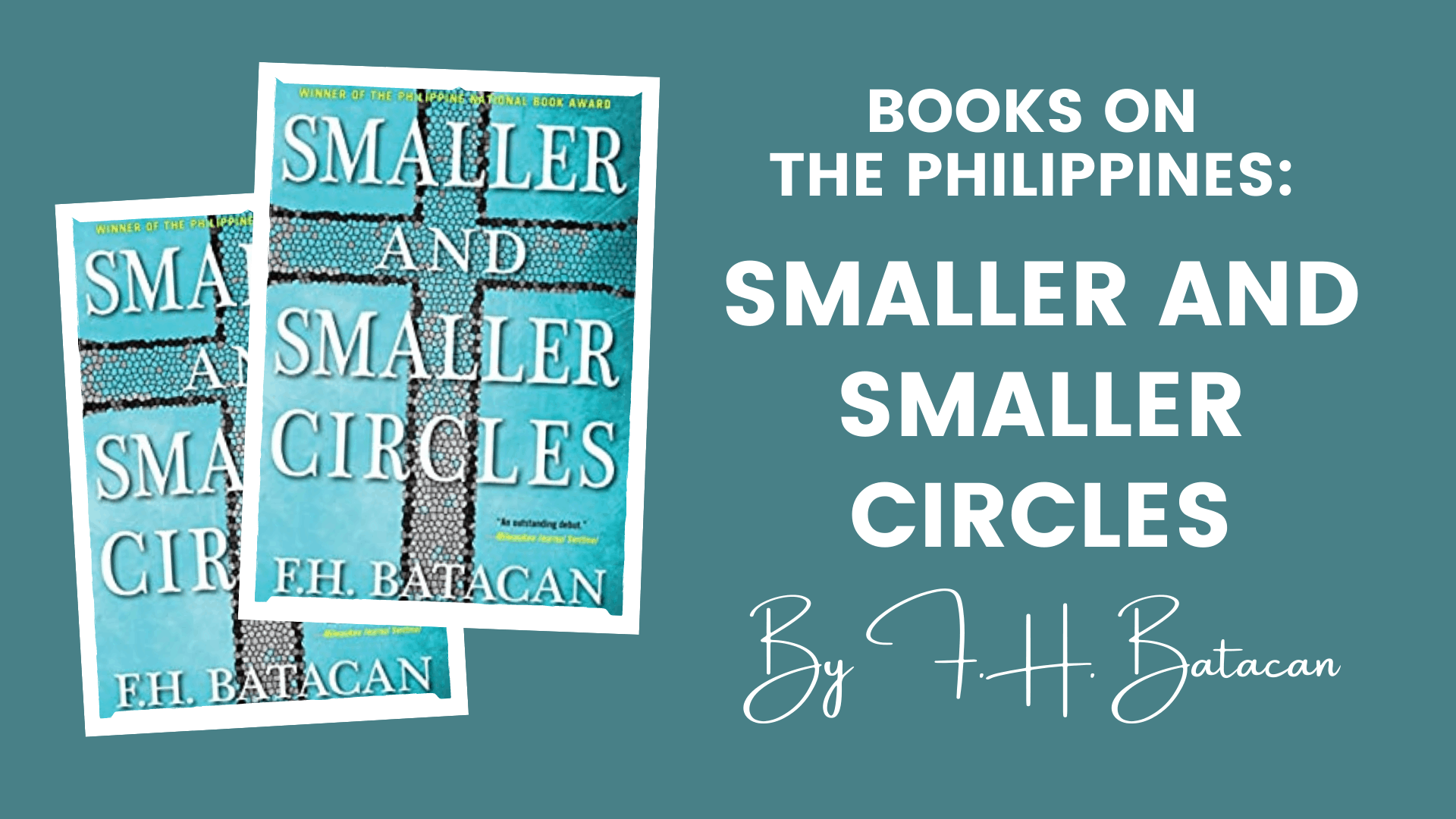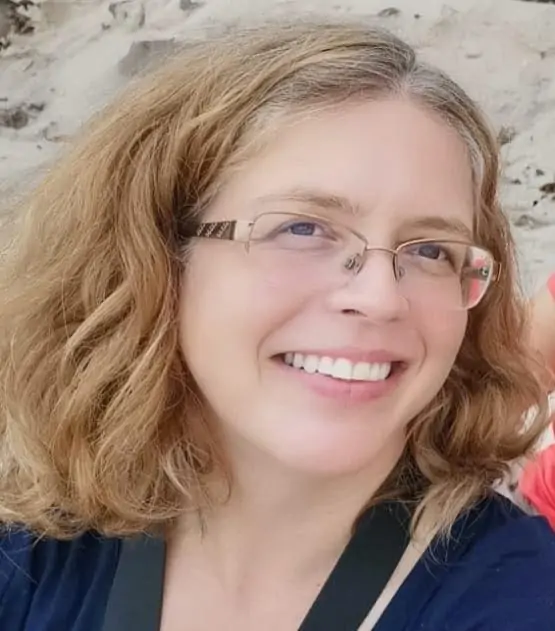Books on the Philippines
Smaller and Smaller Circles
By F.H. Batacan, 2015
Set in Metropolitan Manila, 1997
My Rating: 4 out of 5 stars
“We are all powerless in the face of evil. No, no, that’s not true. We are powerless when we wait for other people to act on our behalf. Yes, that’s it. The truly powerful man is the man who stands alone.”
Disclosure: This post may contain affiliate links. As an Amazon Associate and Bookshop.org, I earn from qualifying purchases. Please see this website’s Disclosure for more info.
For those of you looking for a juicy crime novel set in an exotic location, I highly recommend picking up Smaller and Smaller Circles, a book that takes place in the beautiful tropical country of the Philippines. Written by F. H. Batacan (Maria Felisa H. Batacan—I didn’t realize the author was a woman until after finishing the book), it is considered the Philippines’ first crime novel.
A Summary of Smaller and Smaller Circles
A young boys’ dead body has been found in a dump in the slums of the Payatas district of Quezon City (part of Metropolitan Manila). His face has been skinned and his organs and genitalia removed. Could it be the work of a serial killer? Unfortunately, Philippines police departments do not keep very good statistics on crimes nor do they follow-up on missing person’s reports, so it’s not easy determining if there have been previous murders this grisly.
Luckily, we have Father Gus Saenz, a Catholic priest and the country’s foremost forensic anthropologist, to come to the rescue. The Director of the National Bureau of Investigations, Director Lastimoza senses that this is an important case yet doesn’t trust the police to solve it, so he asks for Father Saenz’s help.
There is some resistance in the law enforcement community to receiving assistance from an outsider like Father Saenz, particularly from the ambitious and inept Attorney Benjamin Arsinas.
Father Saenz with the help of his sidekick, Father Jerome Lucerno, suspect that there are more killings like this one. But many in the bureau believe that serial killings just don’t happen in the Philippines.
“Whenever he finds himself at a social occasion that brings him into contact with law enforcement officials, Saenz tentatively trots out his theory. It is quickly withdrawn when some police general smiles patronizingly and says, “You’ve been watching too many foreign movies, Father Saenz; there are no serial killers in the Philippines.” The reasons offered simultaneously amuse and anger Saenz. “Our neighborhoods are too congested, our neighbors too nosy, our families too tightly knit for secrets to be kept and allowed to fester. We have too many ways to blow off steam—the nightclub, the karaoke bar, the after-work drinking binges with our fun-loving barkada. We’re too Catholic, too God-fearing, too fearful of scandal.”
This comment made me wonder whether some societies really are more conducive to producing serial killers than others. What do you think?
It also reminded me of a taxi ride a took in Manila in March 2020. I was chatting with the driver about the coronavirus, and he proudly stated that the virus wasn’t going to come to the Philippines as Filipinos were clean unlike the Chinese (his words, not mine). Most importantly, the Philippines would be protected because it was a Christian country. Ah. How naïve we all were back then!
Father Saenz and Father Jerome eventually do find out that there are more young boys who have been murdered in this way. A feisty and brilliant journalist and former pupil of Father Saenz, Joanna Bonifacio, sees a pattern as well and joins in the investigation.
The best part of the book is that it’s more than just a crime novel, it’s also a criticism of the inequality and injustices facing many of the poor people in the Philippines. The book also looks at the corruption and neglect of the poor in the government, law enforcement, and the church in the Philippines.
Other issues like pedophilia are examined as we learn throughout the book of Father Saenz attempts to bring a fellow priest to justice for pedophilia all while the church hierarchy and the elites of society protect this priest.
Meaning of the Title
The title refers to the killer’s growing paranoid feelings of being watched by others—Father Saenz, Father Jerome, and the police.
Background on Smaller and Smaller Circles
The book was first written as a novella in 2002. It was later expanded and published again in 2015.
The first time Batacan wrote the novel, she was angry at the injustices of Filipino society. When she was working on the second expanded version later in 2012, she was even angrier at the fact that life had not improved for the poor and powerless.
My Thoughts on Smaller and Smaller Circles
There are a lot of things that I liked about Smaller and Smaller Circles.
I read books set in other countries because I want to learn about them, and this book is perfect for that. Battacan gives her readers a vivid picture of what it is like to be poor and powerless in the Philippines. It’s hard not to be moved and to be angry that society is the way it is.
One thing that struck me was learning that when a poor person goes missing, the family members do not report it to the police because they know the police wouldn’t help htem. Instead, they go on a local radio station to plea for help from the community to find their loved one.
Another thing that got to me was how a father can’t get a job because he has a criminal record. So his children go to the city dumps looking for food to bring back to the family to eat.
The Philippines isn’t the only country that neglects its poor. The United States is guilty as well. But I can find lots of books about the injustices of the U.S. It’s harder to find them about other countries written by authors from that country. Smaller and Smaller Circles is a rare treat.
On a more positive note, it’s always an added bonus for me to read books on places that I’ve been to. I’ve been to Manila and I visited some of the places mentioned in the book. There was one scene in the book where Father Jerome was stuck in traffic in Makate and was griping about the horrible traffic jams in Manila that brought me back to my time in Manila. During my two short stays in Manila, I was stuck in traffic jams multiple times. The ones in Makate were the worst.
The characters in the story are all great. You’ve got the likeable Father Saenz and Father Jerome, who like to ruffle the feathers of the elites, don’t get along with those in power, and who want to see justice served for the poor. They don’t come across as sanctimonious or preachy either.
The reporter, Joanna Bonifacio, is another of my favorite characters in the book—she’s intelligent and ambitious and is not easily fooled by the people in power.
The plot is decent. It isn’t groundbreaking, but it held my attention and kept me wanting to know what was going to happen next. How Father Saenz and Father Jerome solve the case is also quite believable and logical. They looked at the patterns of when the murders happened to guide them in the right direction.
What made me NOT give this book 5 stars?
I just did not buy the reasons that led to the serial killer to kill all those boys. Nope! If you’ve seen Netflix’s television series, Mindhunter, on the FBI and criminal profiling, you know that serial killers generally have similar backgrounds to each other—they’ve been abandoned by their father and are raised by a hypercritical and resentful mother. You can see signs in their early years of future crimes. They’re cruel to animals and weaker children. They start out as peeping Toms before progressing to more serious sexual deviancies. This killer just didn’t fit that profile. If you’ve read Smaller and Smaller Circles, I’m curious as to what you thought of the killer.
Another thing that stretched credibility was how the killer was eventually captured. I won’t go into too much detail here, but I’ll just tell you this that it was too farfetched.
This is still a great book. And if we ever solve this pandemic and we can travel again and you’re looking for something to read while you’re on the beach in the Philippines, I highly recommend Smaller and Smaller Circles.
About the Author: F.H. Batacan
Maria Felisa H. Batacan worked for 10 years in the Philippine Intelligence community before becoming a broadcast journalist.
She did write a sequel to Smaller and Smaller Circles that was published as a short story in an anthology on Manila Noir in 2013.
Main Characters in Smaller and Smaller Circles
- Father Gus Saenz – Catholic priest and forensic anthropologist
- Father Jerome Lucerno – a former pupil of Father Saenz and now his friend; a psychologist who teaches at the same university as Father Saenz
- Director Lastimoza – Director of the National Burea of Investigations; an older guy who was brought in to prepare for a younger and better connected future Director;
- Attorney Benjamin Arsinas – an ambitious and inept attorney who works for the Bureau
- Joanna Bonifacio – intelligent and fierce crime reporter; former pupil of Father Saenz
- Attorney Valdez – an attorney who is loyal to Director Lastimoza
- Father Ramirez – a priest that Father Saenz suspects of molesting children
Favorite Quotes
“My life can’t just be interesting. It has to be meaningful.”
“Some things are better dealt within the cleansing light of transparency and openness rather than in the darkness of secrecy.”
“No sense complaining about the world’s freest press–we fought for it, we got it, now we have to live with the nonsense that it spews out.”
“In a different kind of society—a better kind—he would have been in school, would have had a chance to play, would have had better food to eat and cleaner air to breathe. And if he still died the way he eventually did, society’s guardians, its authorities and lawmen, would have left no stone unturned to find out who was responsible.”
More Posts on the Philippines
- 15 Ridiculously Beautiful Places to Visit in the Philippines
- Philippines Itinerary: 3 Weeks Exploring Cebu and its Surrounding Islands
- Bohol Travel Guide: Exploring the Natural Wonders of the Philippines
- Siquijor Itinerary: Exploring the Island of Fire
- Malapascua & Kalanggaman Itinerary: Discovering Paradise in the Philippines
- El Nido Itinerary: The Best Destination in the Philippines
More Books on the Philippines
- In Our Image – By Stanley Karnow
- Patron Saints of Nothing – By Randy Ribay
- America is Not the Heart – By Elaine Castillo
- Ilustrado – By Miguel Syjuco
- Something in Between – By Melissa de la Cruz
- In the Country – By Mia Alvar
Get FREE trials of my favorite Amazon products:
- Kindle Unlimited – I have a subscription to Kindle Unlimited just for all the free Lonely Planet guidebooks. You get FREE books and magazines including Lonely Planet books with a 1-month FREE trial.
- Audible – Audible is amazing for those who need something to listen to while going for long walks. You get 2 FREE books with a FREE one-month trial.
- Amazon Prime 30-Day FREE Trial – I was an Amazon Prime Member for years (I’m traveling full-time now so it’s not so useful). I loved its free shipping and its Amazon Prime movies and TV shows (Mrs. Maisel, Bosch, and Expanse).
- Prime Student 6-month FREE Trial – If you have a university email account, you can get an even better deal with a FREE 6-month trial of Amazon Prime.
More Books from Around the World
- 30 Books on Singapore
- 10 Books on Malaysia
- 13 Books on Myanmar
- 25 Nonfiction Books on China
- 35 Fiction Books on Japan
- 15 Books on Korea
- 25 Books on Thailand
- 28 Books on Vietnam
- 20 Books on Sri Lanka
- 15 Books on Indonesia
- 25 Books on Cambodia
- 15 Books on Guatemala
- 16 Books on the Ancient Maya’
- 13 Books on Russia and Vladimir Putin
- 35 Books on Ukraine
- 25 Books on Ecuador
- 25 Books on Panama






0 Comments